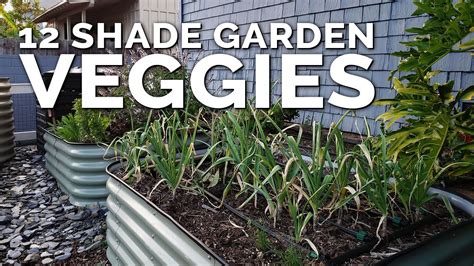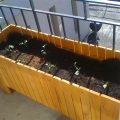Best Vegetables to Grow on a Shady Balcony for Urban Gardeners
Urban gardening has grown in popularity, especially among apartment dwellers with limited outdoor space. If you have a shady balcony, you might wonder what vegetables you can successfully grow without much sunlight. Fear not—many vegetables thrive in low-light conditions. In this guide, we’ll explore the best vegetables for shady balconies, how to create an ideal container gardening setup, and tips for a bountiful harvest.
Key Concepts of Low-Light Urban Gardening
Shady balconies typically receive less than 4 hours of direct sunlight per day, meaning many sun-loving vegetables may struggle to grow. However, certain varieties are better adapted to these conditions. The key factors to consider when growing vegetables in low light are:
- Plant Selection: Choose shade-tolerant vegetables that require minimal sunlight.
- Container Gardening: Use portable containers to optimize space and sunlight exposure.
- Soil and Nutrients: Ensure soil quality is rich in organic matter and well-drained.
- Seasonal Growth: Choose cool-season crops, which often require less light.
Historical Context of Urban Gardening
Urban gardening has been practiced for centuries, dating back to ancient civilizations where city dwellers cultivated crops in confined spaces. In recent decades, urban gardening has seen a resurgence due to rising interest in sustainable living and food security. As cities grow denser, the need for innovative gardening solutions, such as container gardening and vertical gardens, has become more pressing. This trend has opened the door to low-light gardening, enabling people with limited space and sunlight to still grow their own vegetables.
Current State Analysis: Vegetables Suited for Shady Balconies
While full-sun conditions are ideal for most vegetables, many shade-tolerant crops can still flourish in partial sunlight. These include leafy greens, root vegetables, and some herbs. Below is a list of vegetables that perform well in low-light environments:
| Vegetable | Ideal Conditions | Harvest Time |
|---|---|---|
| Spinach | Cool temperatures, partial shade | 40-50 days |
| Lettuce | Partial shade, moist soil | 30-40 days |
| Radishes | Shady areas, well-drained soil | 25-30 days |
| Kale | Partial shade, tolerates cool temperatures | 50-60 days |
| Chard | Low light, moist soil | 55-65 days |
| Broccoli | Cool temperatures, partial shade | 55-60 days |
| Beets | Partial shade, rich soil | 50-60 days |
| Carrots | Cool temperatures, partial shade | 60-75 days |
| Cilantro | Shady areas, moist soil | 50-55 days |
| Parsley | Partial shade, moist conditions | 70-90 days |
Practical Applications: Gardening Tips for Success
Here are several practical tips to ensure your vegetables thrive on a shady balcony:
- Use Reflective Surfaces: Place mirrors or white surfaces near your plants to bounce light onto them.
- Move Containers: Track the sunlight throughout the day and move containers to maximize exposure.
- Water Management: Shady areas tend to stay damp longer, so avoid overwatering.
- Fertilize Regularly: Since low-light conditions can slow growth, use a balanced fertilizer to maintain healthy plants.
- Choose Vertical Gardening: Maximize space by using trellises or vertical structures for climbing vegetables like peas or beans.
Case Studies of Successful Shady Balcony Gardens
Urban gardeners worldwide have achieved success with low-light gardening. Here are two case studies:
Case Study 1: Small Balcony in New York City
In a 100-square-foot shady balcony, a gardener grew spinach, kale, and lettuce using vertical planters and portable containers. By optimizing sunlight exposure with reflective surfaces and moving plants during the day, they harvested enough leafy greens to supplement their diet for several months.
Case Study 2: Low-Light Balcony in Seattle
In a partial-shade environment, a gardener grew beets, chard, and radishes. They utilized high-quality potting soil and organic fertilizer to offset the slower growth caused by low light. With proper care, the gardener harvested root vegetables that flourished despite limited sunlight.
Stakeholder Analysis: Who Benefits from Shady Balcony Gardens?
Shady balcony gardening benefits a range of stakeholders, including:
- Urban Dwellers: People living in apartments with limited outdoor space gain access to fresh, homegrown vegetables.
- Environmentalists: Growing vegetables locally reduces carbon footprints associated with transporting produce.
- Local Communities: Urban gardening can strengthen communities by encouraging shared knowledge and resources.
- Health Enthusiasts: Access to fresh vegetables supports healthier diets and promotes well-being.
Implementation Guidelines for Successful Shady Balcony Gardening
Here are actionable steps to get started with shady balcony gardening:
- Assess Light Levels: Monitor your balcony to understand how much direct sunlight it receives.
- Choose the Right Vegetables: Select vegetables that are known to thrive in low-light conditions.
- Use Quality Containers: Invest in containers with good drainage and ample space for root development.
- Optimize Light Exposure: Use reflective surfaces, and move plants to sunny spots when possible.
- Maintain Soil Health: Use nutrient-rich soil and fertilize regularly to compensate for slow growth in low light.
Ethical Considerations of Urban Gardening
Urban gardening can be a sustainable solution to food production but may also raise ethical concerns, such as:
- Resource Use: Balancing the use of water and soil in urban settings to avoid environmental degradation.
- Equity: Ensuring that urban gardening initiatives are accessible to all, particularly low-income communities.
- Pesticides: Encouraging organic growing methods to avoid harmful chemicals in dense urban areas.
Limitations and Future Research in Shady Balcony Gardening
While shady balcony gardening offers numerous benefits, there are limitations that should be addressed in future research:
- Limited Crop Variety: Only certain vegetables thrive in low-light conditions, limiting crop diversity.
- Growth Rates: Plants in shady environments may have slower growth rates, impacting yields.
- Water Retention Issues: Shady areas often retain moisture, which can lead to root rot if not managed properly.
Future research could focus on developing new plant varieties better suited for low-light conditions and improving container designs to mitigate moisture-related problems.
Expert Commentary on Urban Gardening in Shady Spaces
Experts in urban gardening agree that with careful planning, even a shady balcony can produce a bountiful harvest. The key is selecting the right crops and managing light and water levels efficiently. According to gardening expert Sarah Johnson, “Shady balconies might seem challenging, but they offer unique opportunities for growing cool-season crops. With the right techniques, anyone can cultivate a thriving vegetable garden, regardless of light levels.” Furthermore, as cities continue to grow, the demand for space-saving, sustainable gardening practices is expected to rise, making balcony gardening a valuable skill for the future.


